In a quest to explore more of my city Delhi, I went out and about finding my way towards Qutub Minar.
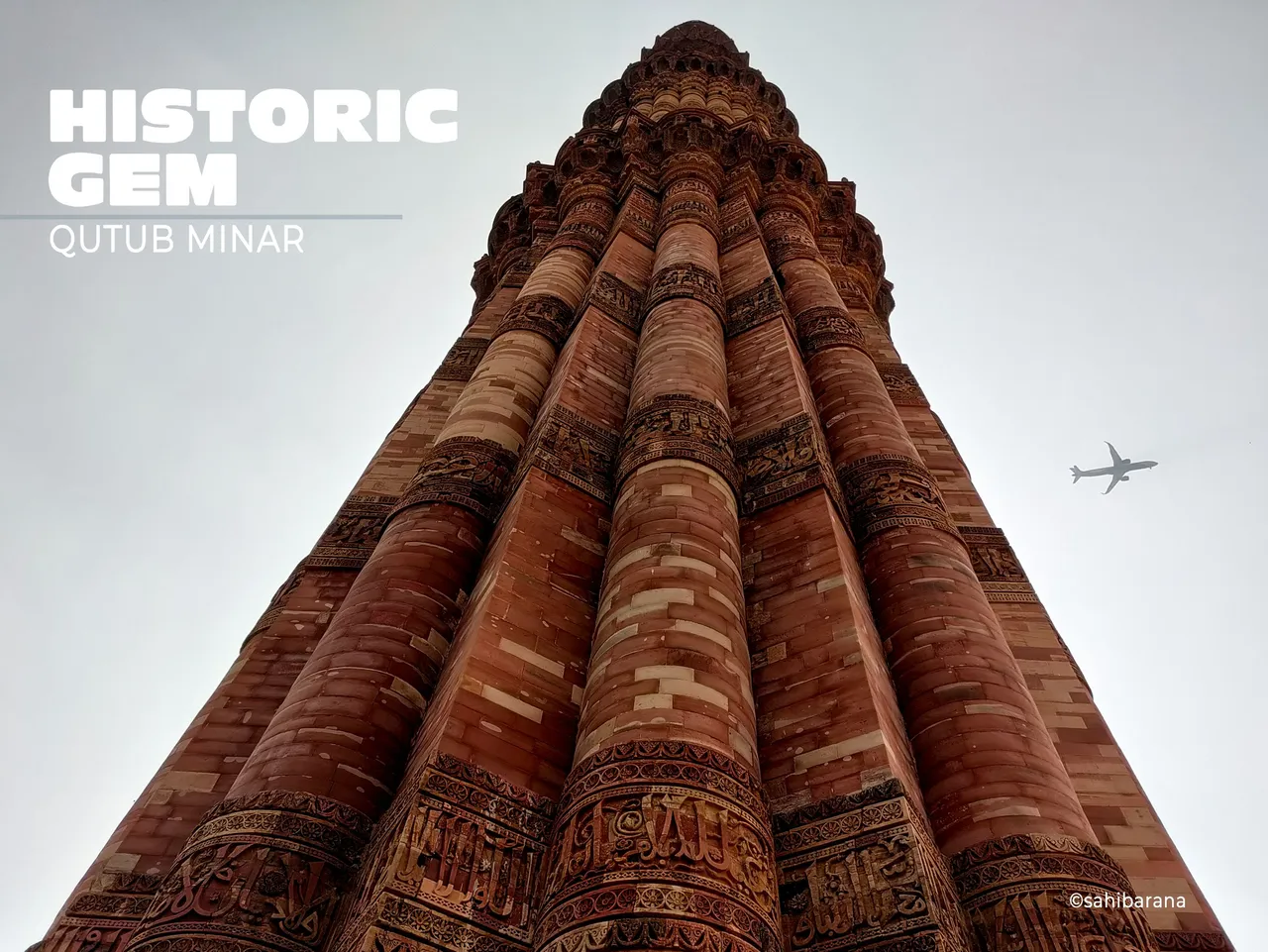
A historic landmark which is set amidst beautiful greenery. Being an UNESCO World Heritage Site one can understand how important this monument is for the nation.
Recalling my last visit which was for a live sketching class during college, It was certainly a lively experience and now visiting again after couple of years seems like time has seized as nothing has moved or developed even an inch. That's the beauty of every historical monument. You tend to forget which era you belong to and just dive into the mystical realm of the built environment.
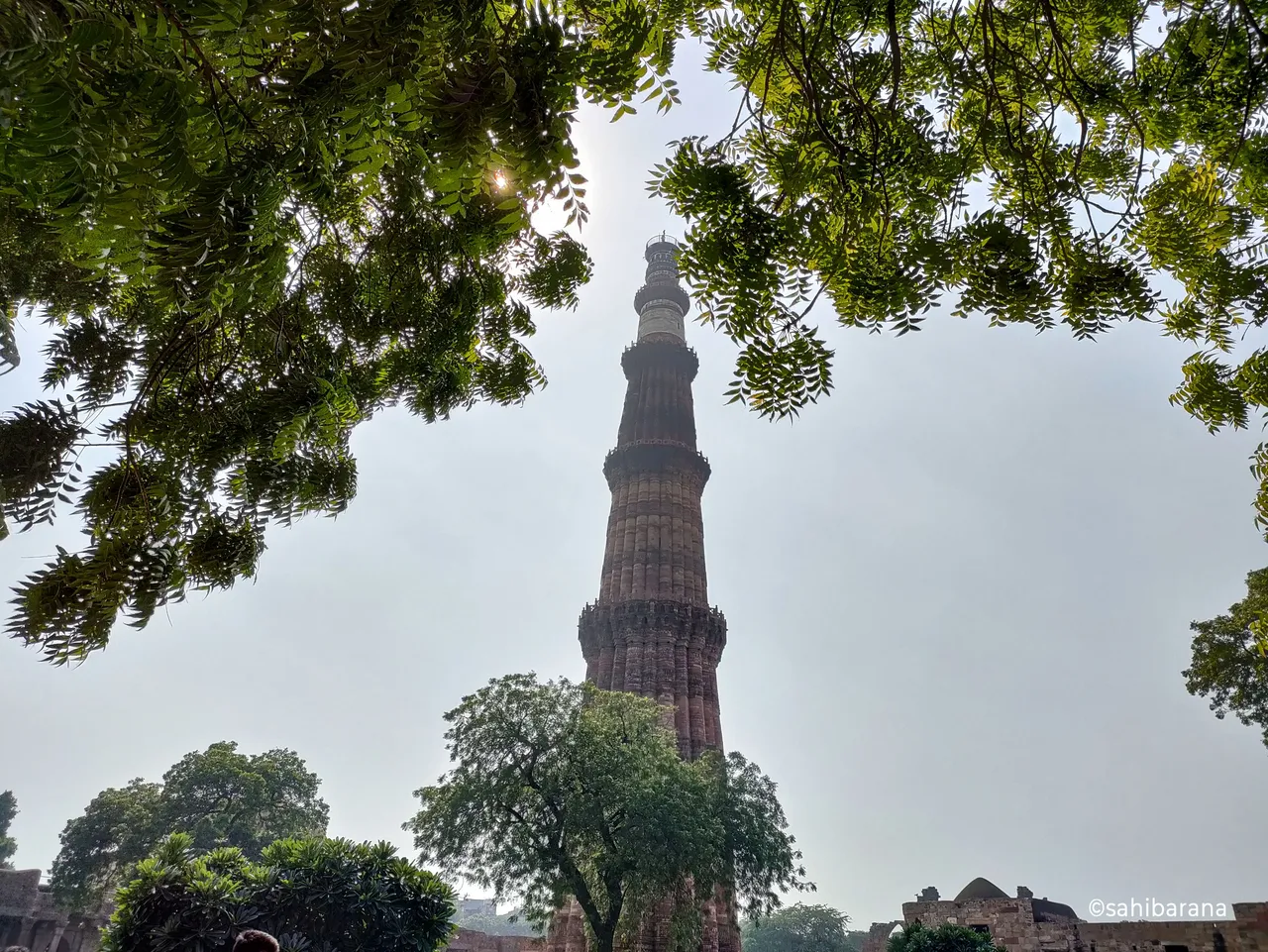
Being crowded almost any given day of week shows how much visited this place is and apart from admirers, many professional photographers visit there for different kind of shoots.
The Architectural Value- tallest minaret in the world which is built of bricks.
Before knowing it's history, as an preface one should be aware of it's architectural styles. There's not a single style but multiple styles which includes- Pesrian-Arabic{Islamic} and Nagari{Hindu}.
This is 72.5 m high minaret with spiral staircase inside which opens up at different balconies provided at different heights. The Qutub complex doesn't just owe the minaret but some ruins of mosque and a temple as well.
The Debate
You must be astonished as to how is a temple there. I would respectfully point out that there is major speculations as to which religion this particular complex belongs to, Some evidences of broken idols, lotus flower engravings , bells and decoration engravings, the peculiar nagara style of architecture and the written engravings on iron pillar{Which will be described by the end of this article} , The column design, roof style etc points out this complex to be built by hindus 800-1000 years ago.
Whereas the Arabic verses engraved upon the sandstone and the mosque's ruins by its side indicate towards the Islamic architecture which was build by Mughals.
Being a Hindu myself also respecting and having faith in all the religions and culture across globe, I understand the religious sentiments involved in the disputed history of this beautiful place But, here I would like to be neutral on religion's part and would like to just highlight the design elements which attracted me the most as an architect.
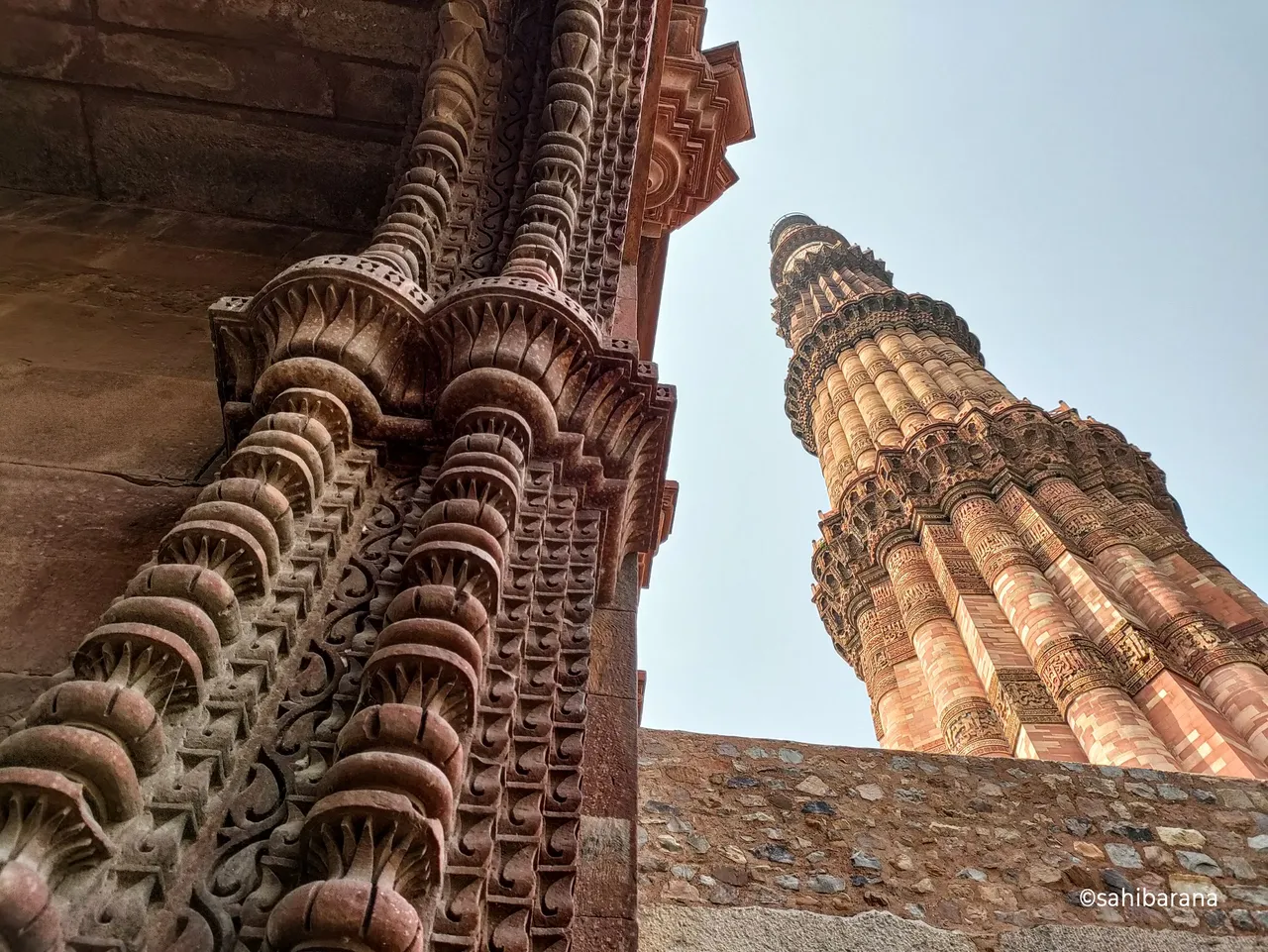
It's quite evident by now that this structure is built using sandstone and all the decorations, engravings and idols were made through it which is phenomenal job done by those artists thousand of years ago.
Can you imagine as to how the 14.3 metres (47 feet) base diameter, reducing to 2.7 metres (9 feet) at the top of the peak was done without any software or advanced technologies and studies? How fascinating.
Let's have some close up glimpse of the beautiful minaret
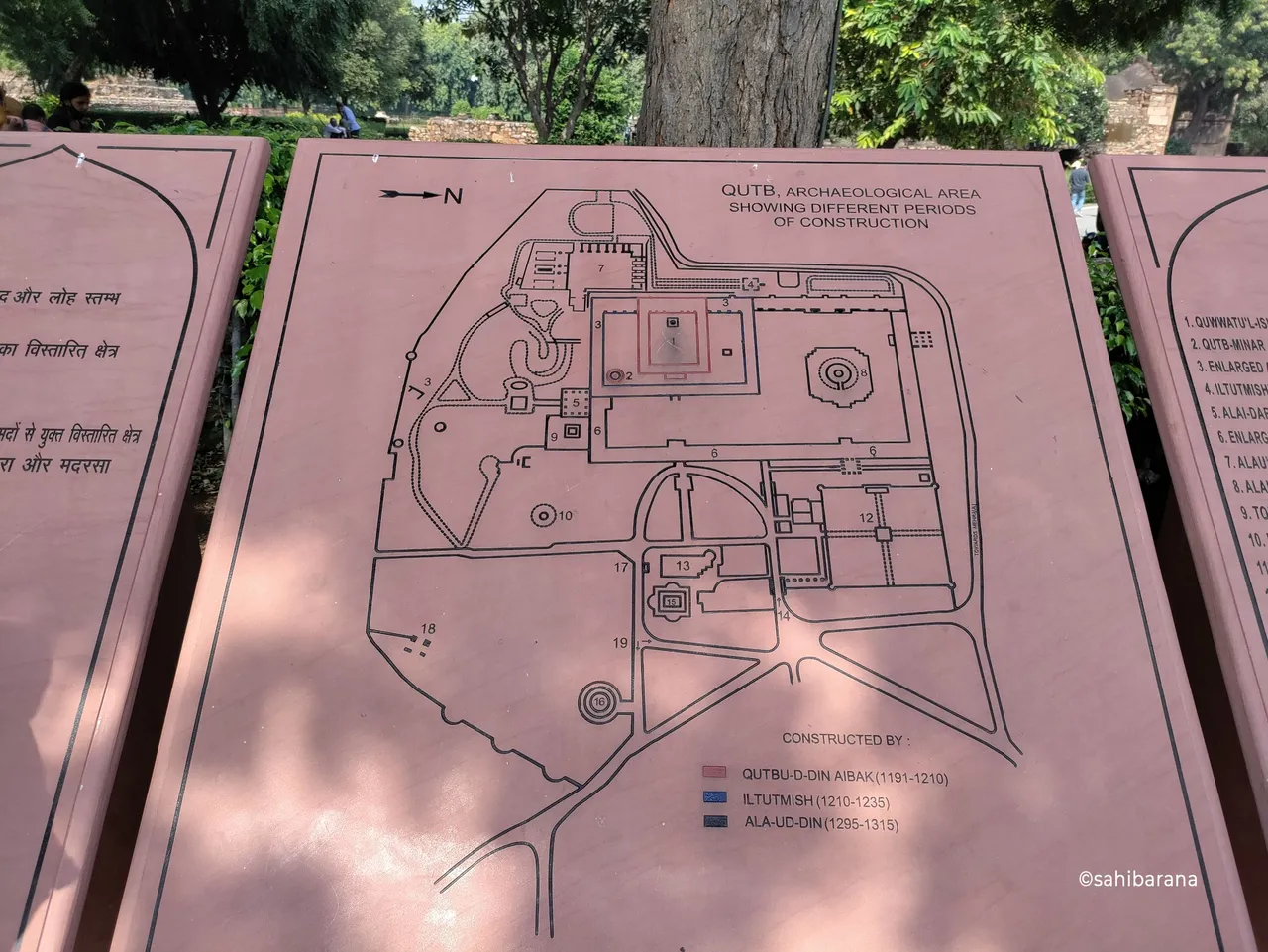

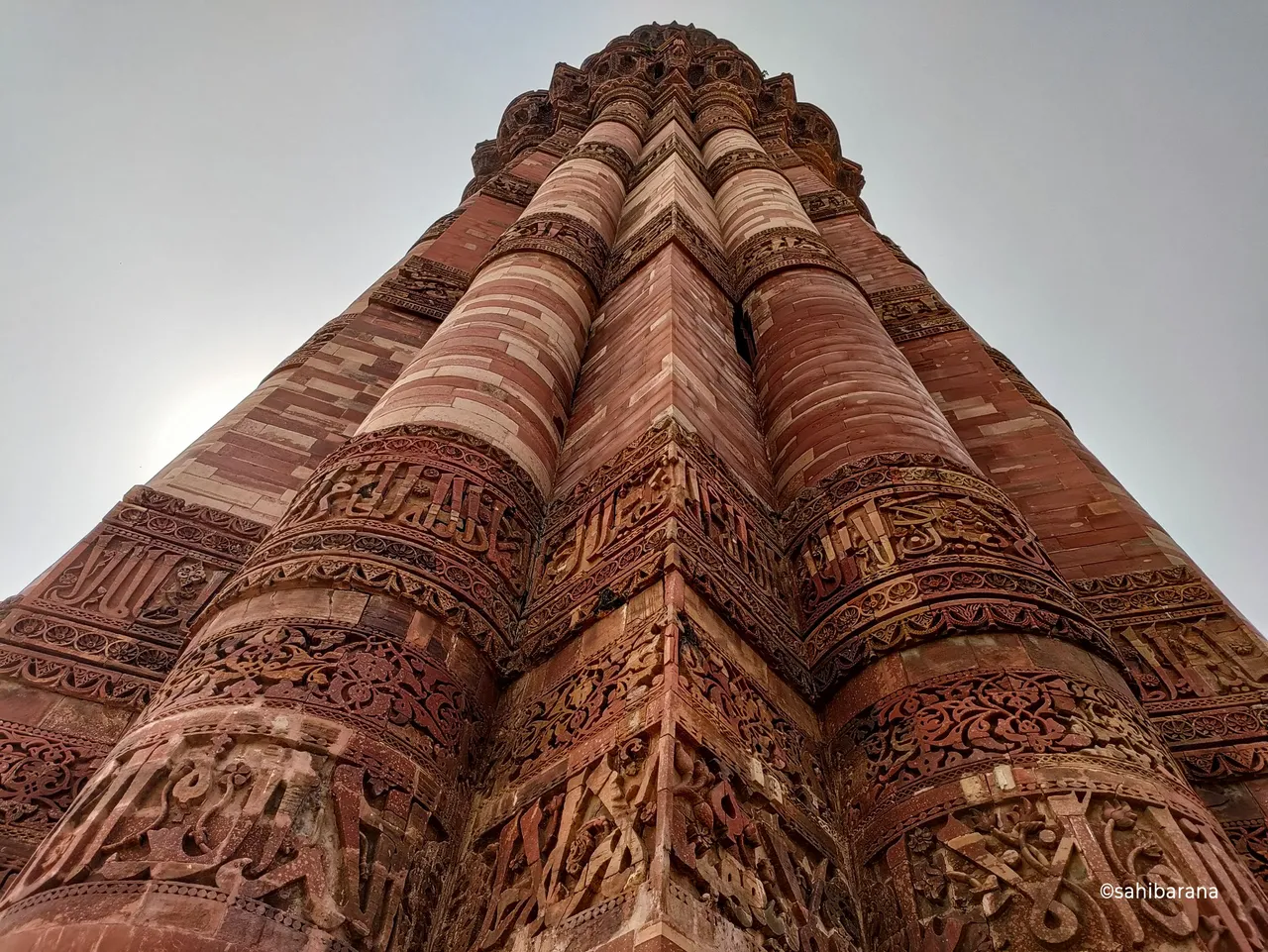
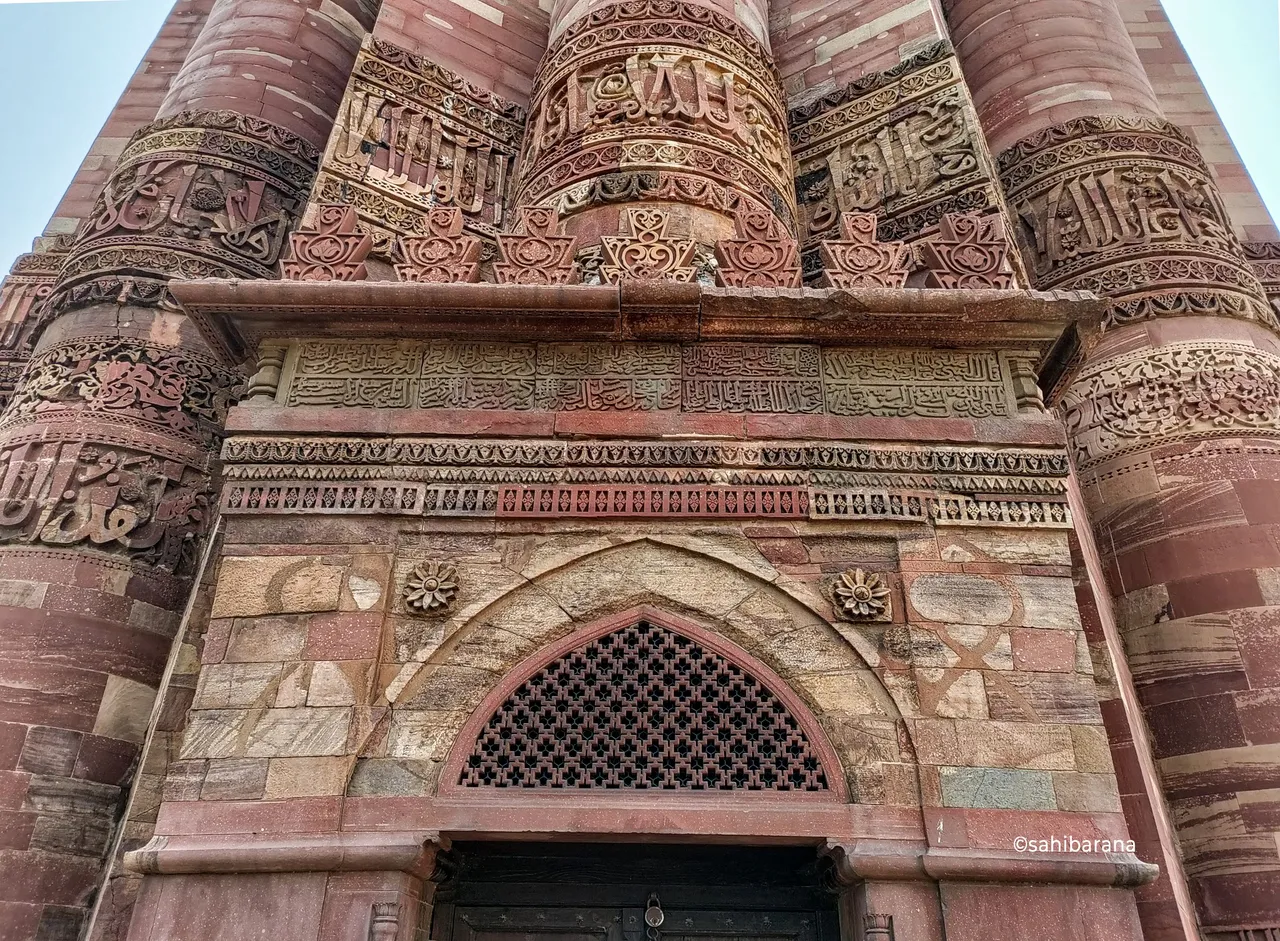
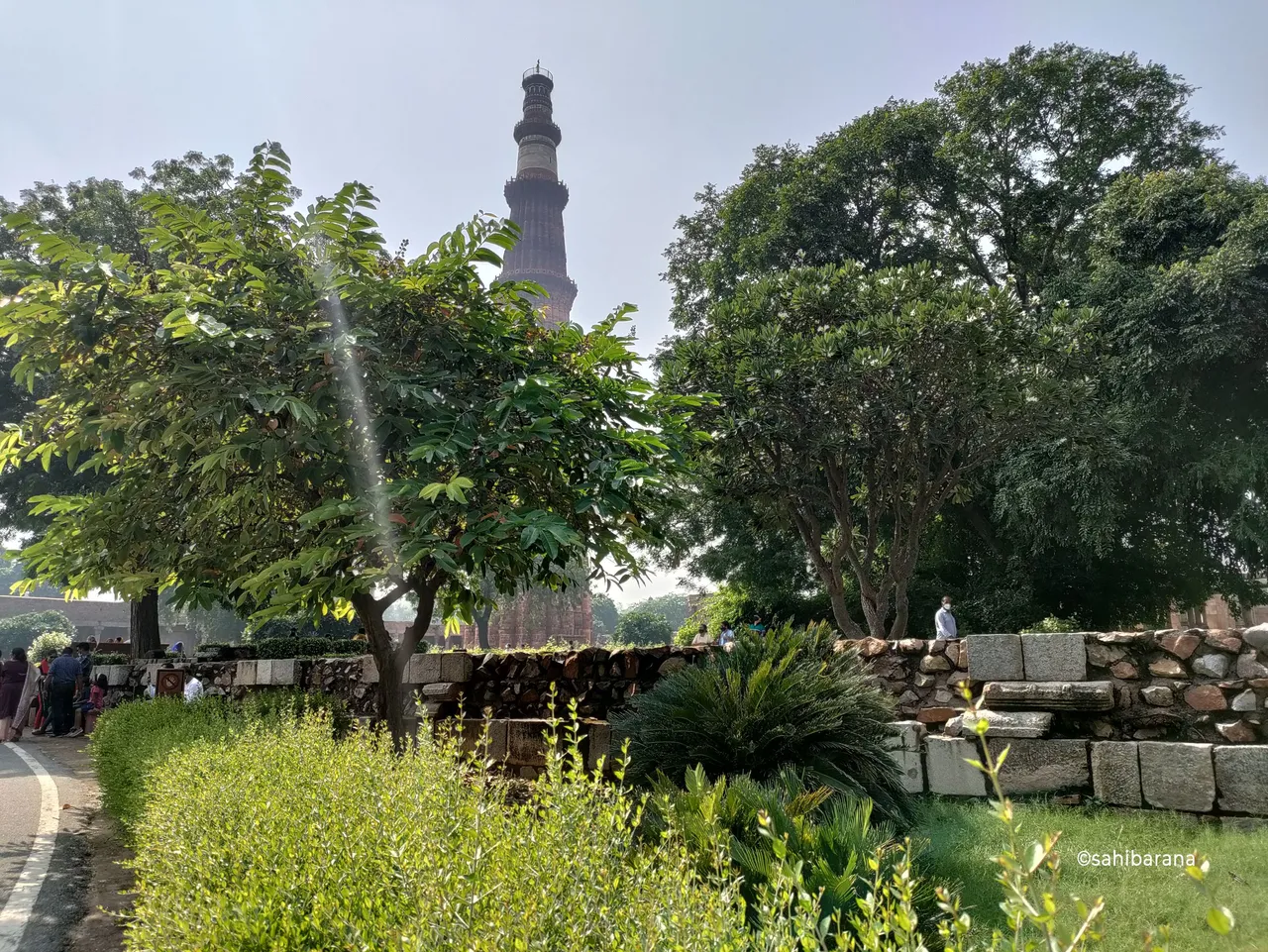
The landscaping is phenomenally done across the entire complex.
Accessibility and Maintenance
Metro is heart of Delhi's communters, You just name a place and it would have a metro station, Delhi's traffic and pollution has bad repo all around the world but the metro services have reduced the load on pollution and roads for sure.
Similarly, Qutub minar complex has a metro station named after itself. The Qutub Minar metro station is just few metres away from the complex. The complex has a huge parking for the private vehicles and a nice road which connects many bus stations. which makes it easily accessible.
Considering that this is UNESCO World Heritage Site, The government has a nice budget on maintaining the complex. There is plenty of greenery more like a jungle around the complex which adds to the beauty. The landscape in the inner part of the complex is done so nicely which showcases how respectfully this historic gem of our nation is kept.
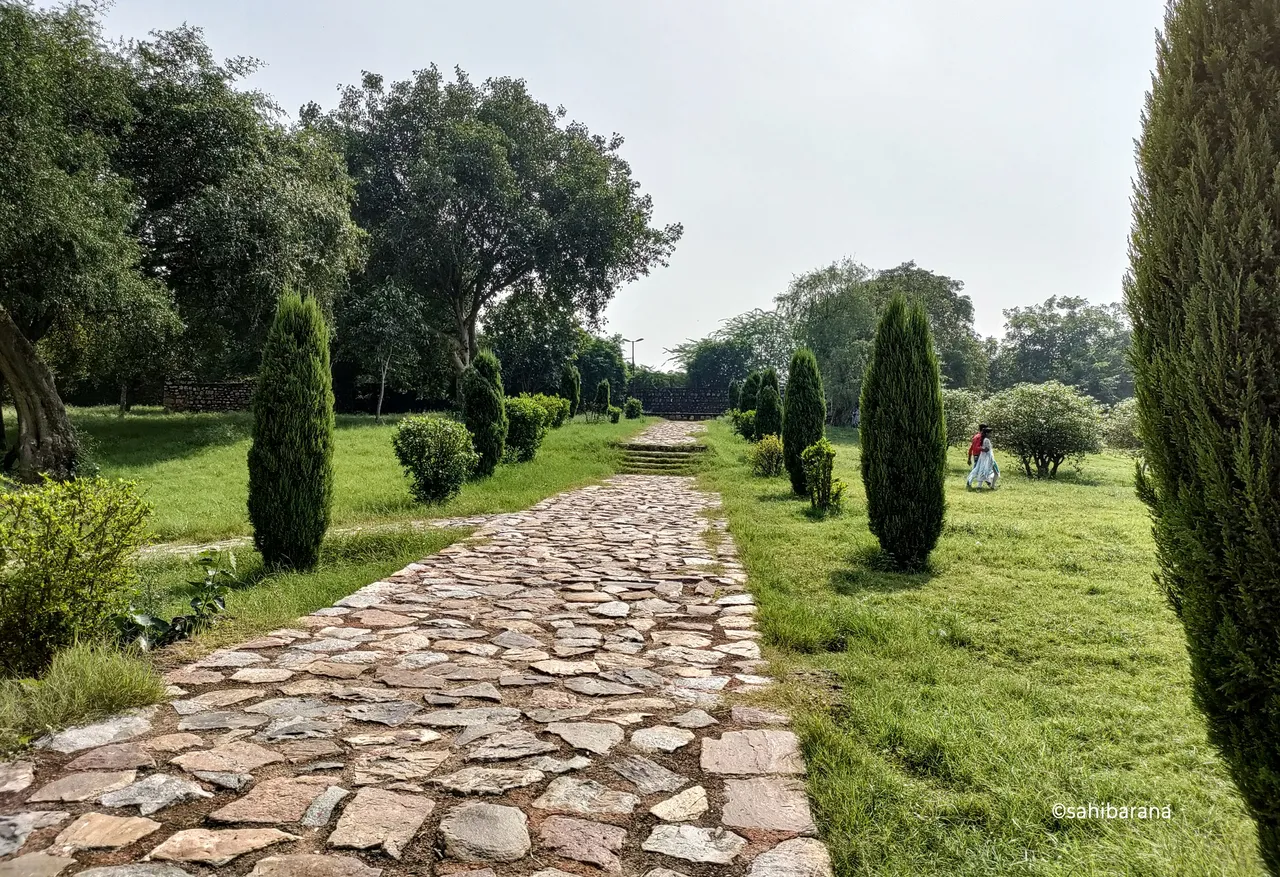

The public washrooms were really well maintained and were found at three places within the huge complex.
The Ruins
The complex holds ruins which are partially restored as they showcases how the designs were made beautifully and how people loved their work to an extend of doing extra which symbolises their period of time. This complex house many such ruins.
When I looked at the detailing, Just gasped in astonishment. As how they would have carved very little detail moreover how they would have made structure plans and what kind of foundation must have sustained 1000 of years.
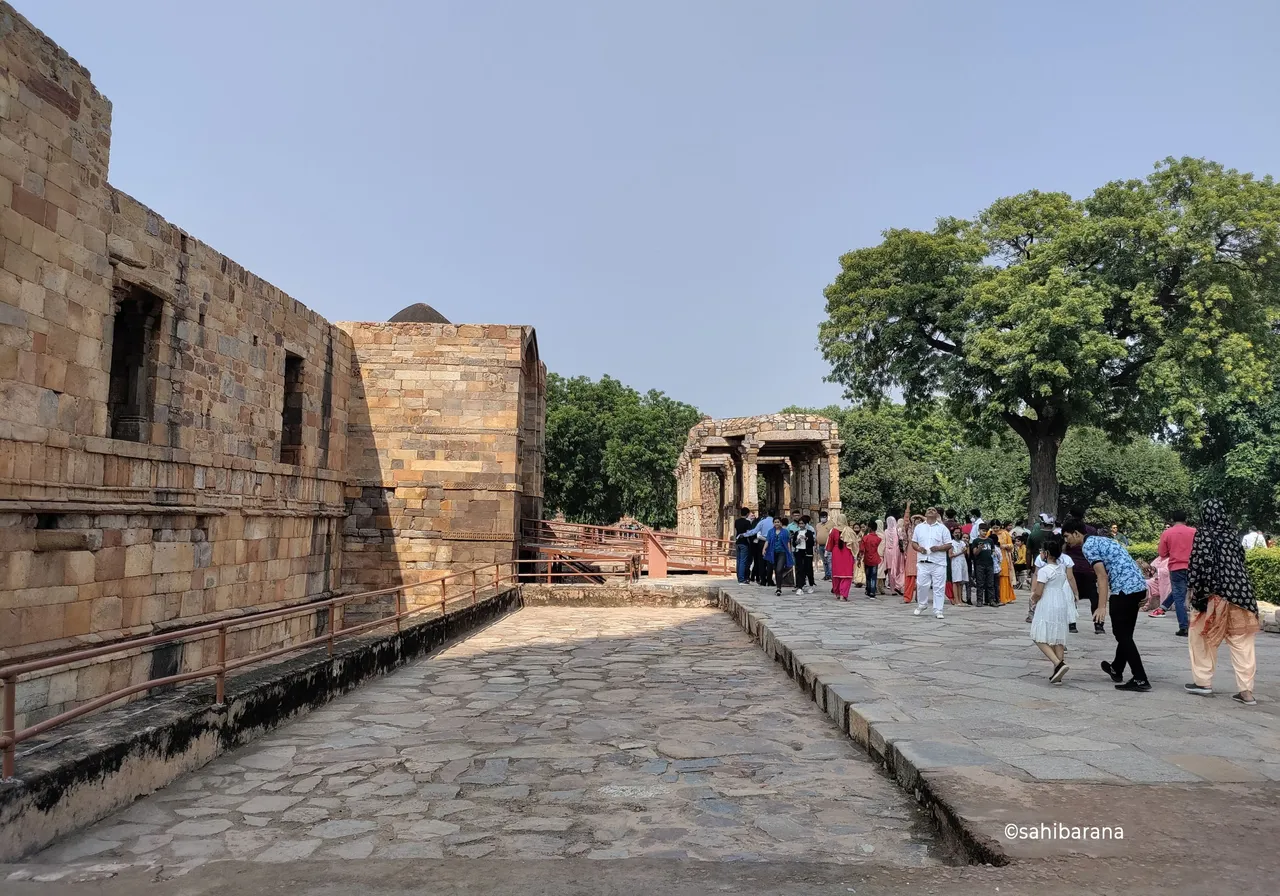
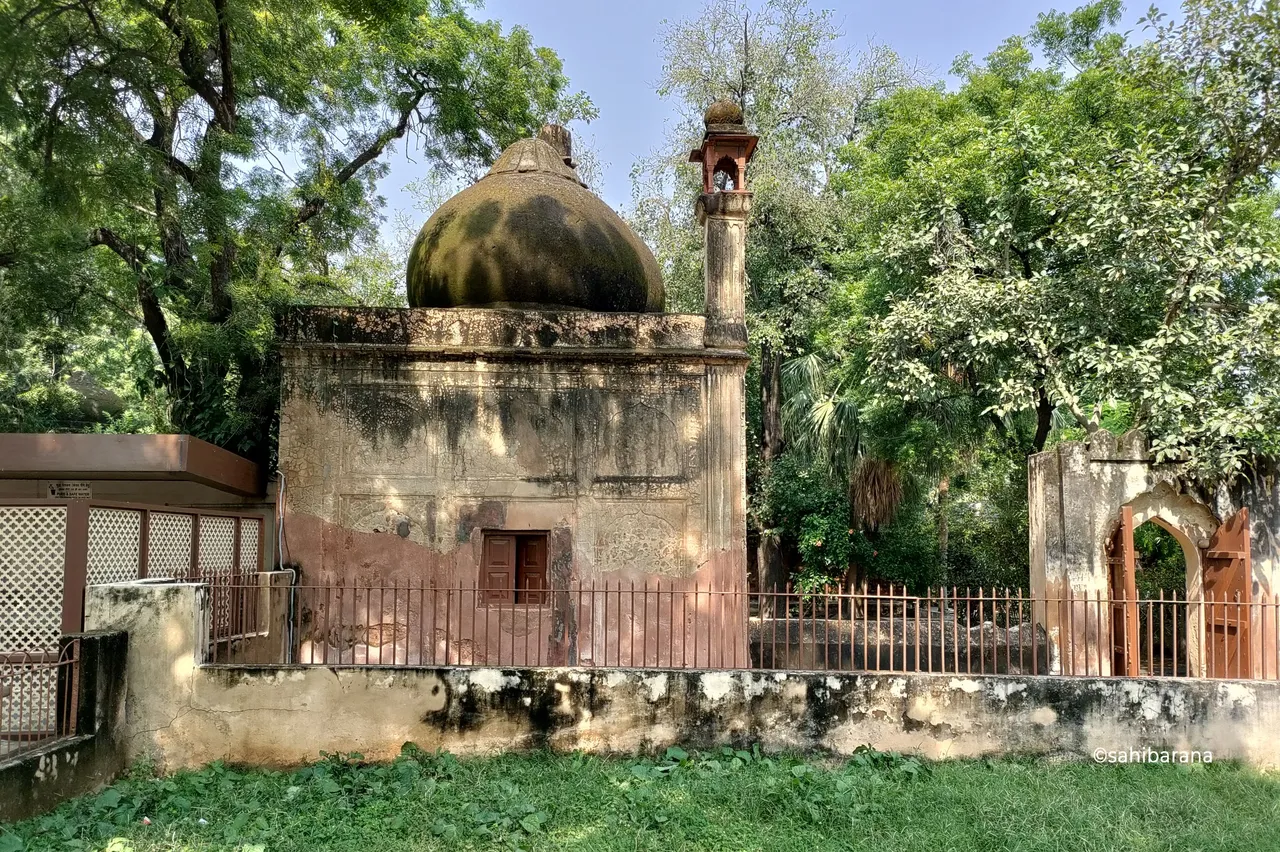
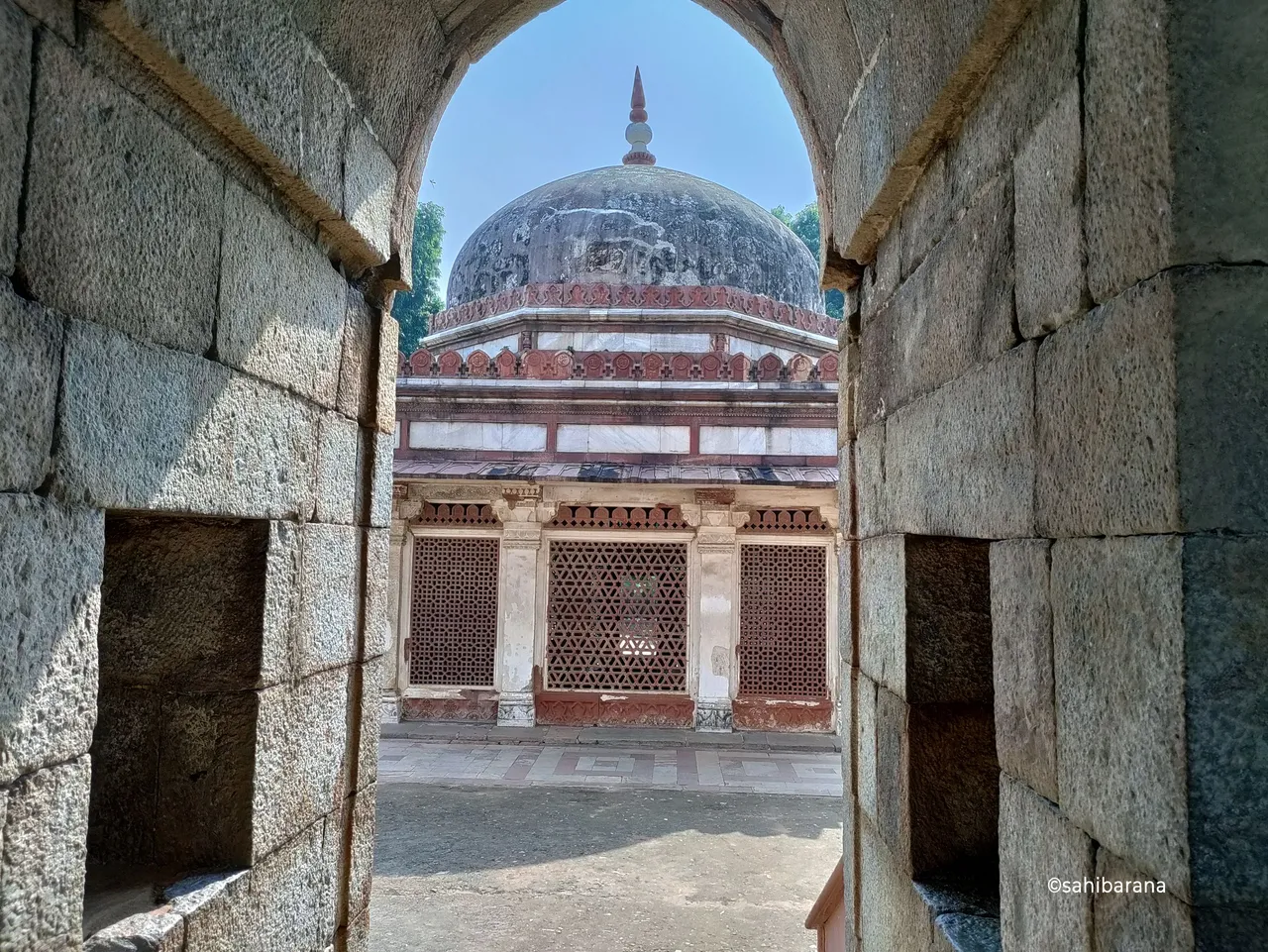
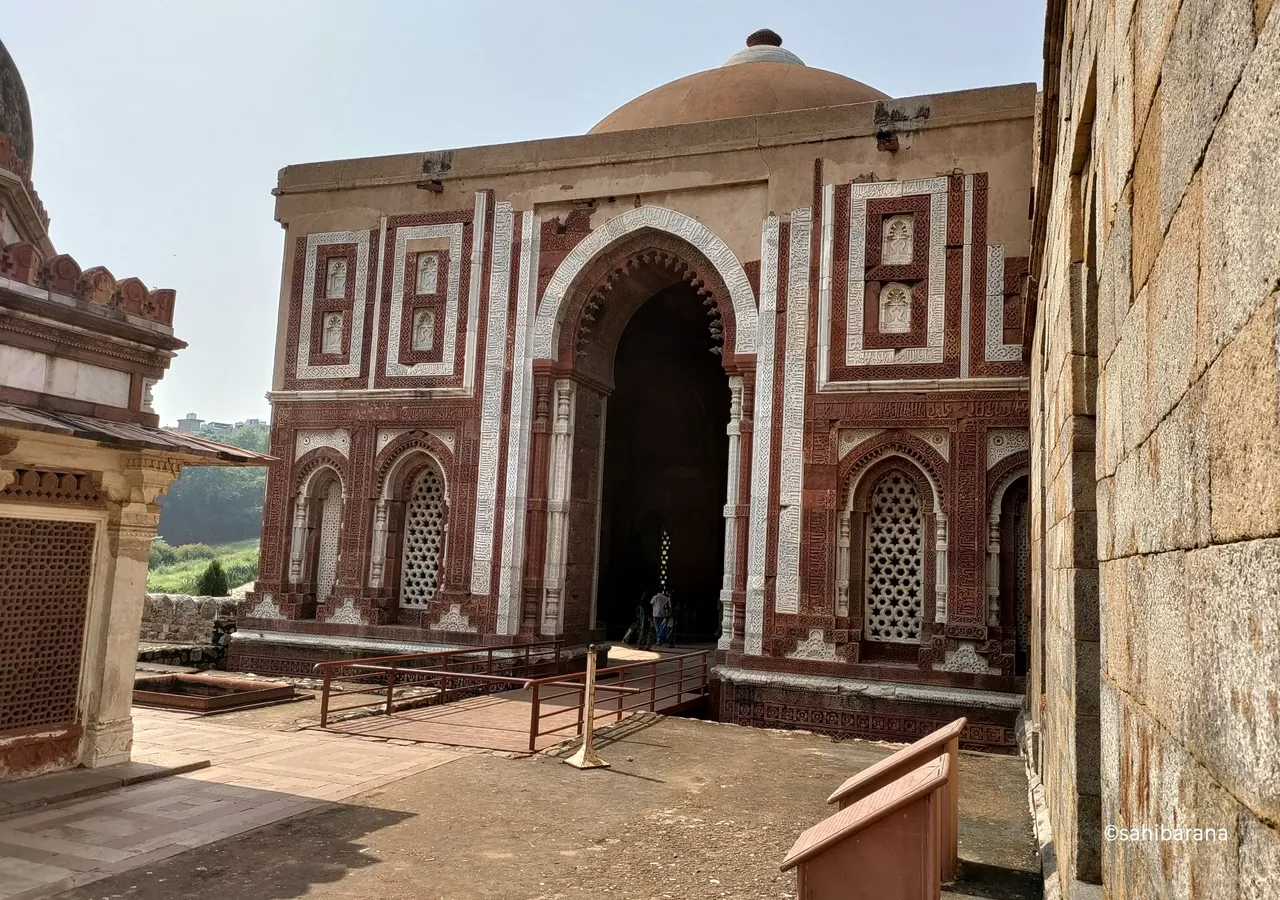
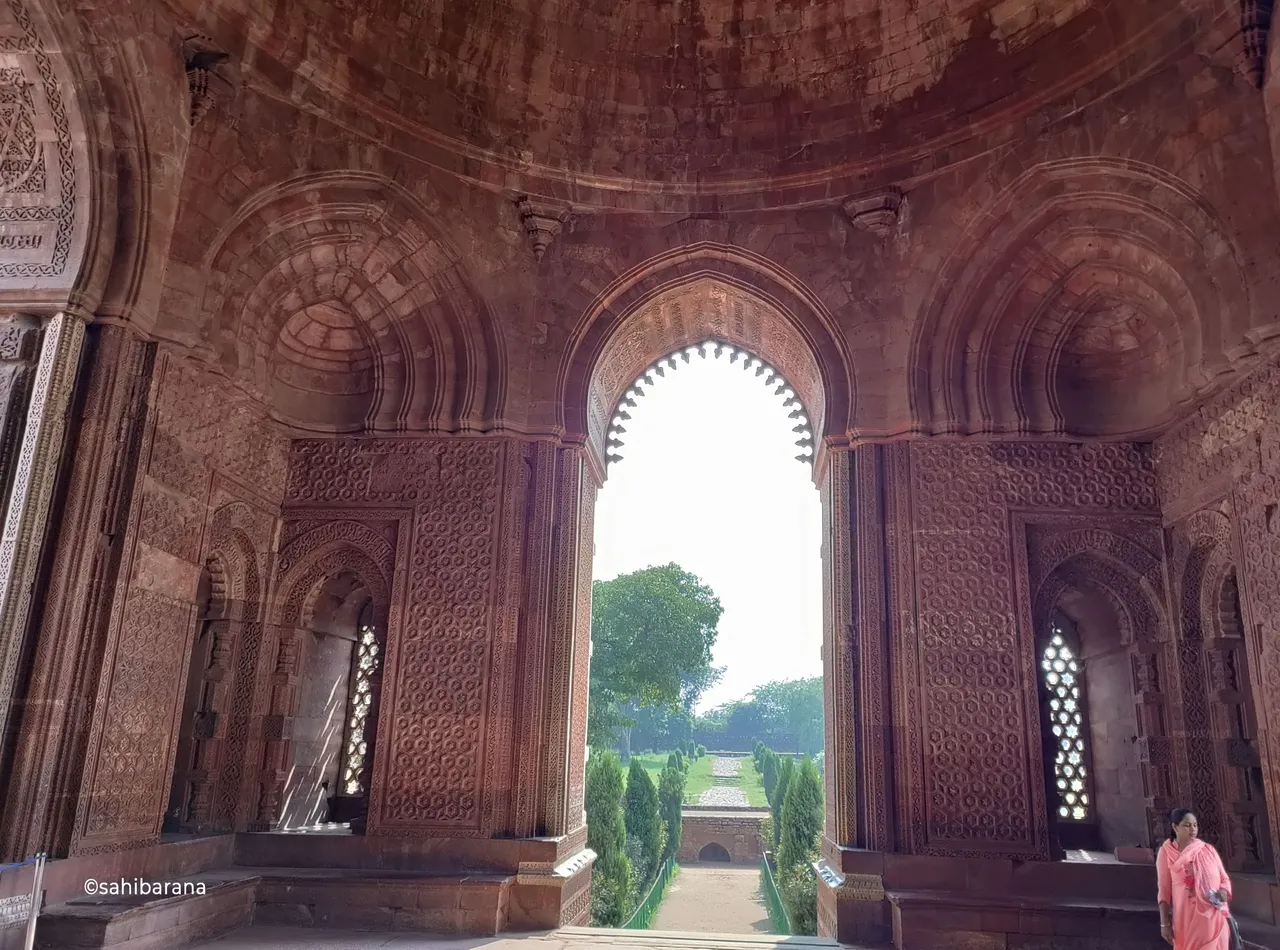
The ruins of the mosque showcases how the people in past have left their impressions in history by creating such beautifully carved structures, This is arabic style of architecture with beautiful carvings and a central dome which has no carvings inside but it is mentioned that those carvings were destroyed over course of time in a natural pace.
The typical 'Alle' all around the mosque with beautiful jali pattern showcases
Following the pathways, There is contour on the site, After adoring the minaret and the ruins of mosque, we travel towards the west side of the complex which holds the ruins of temples
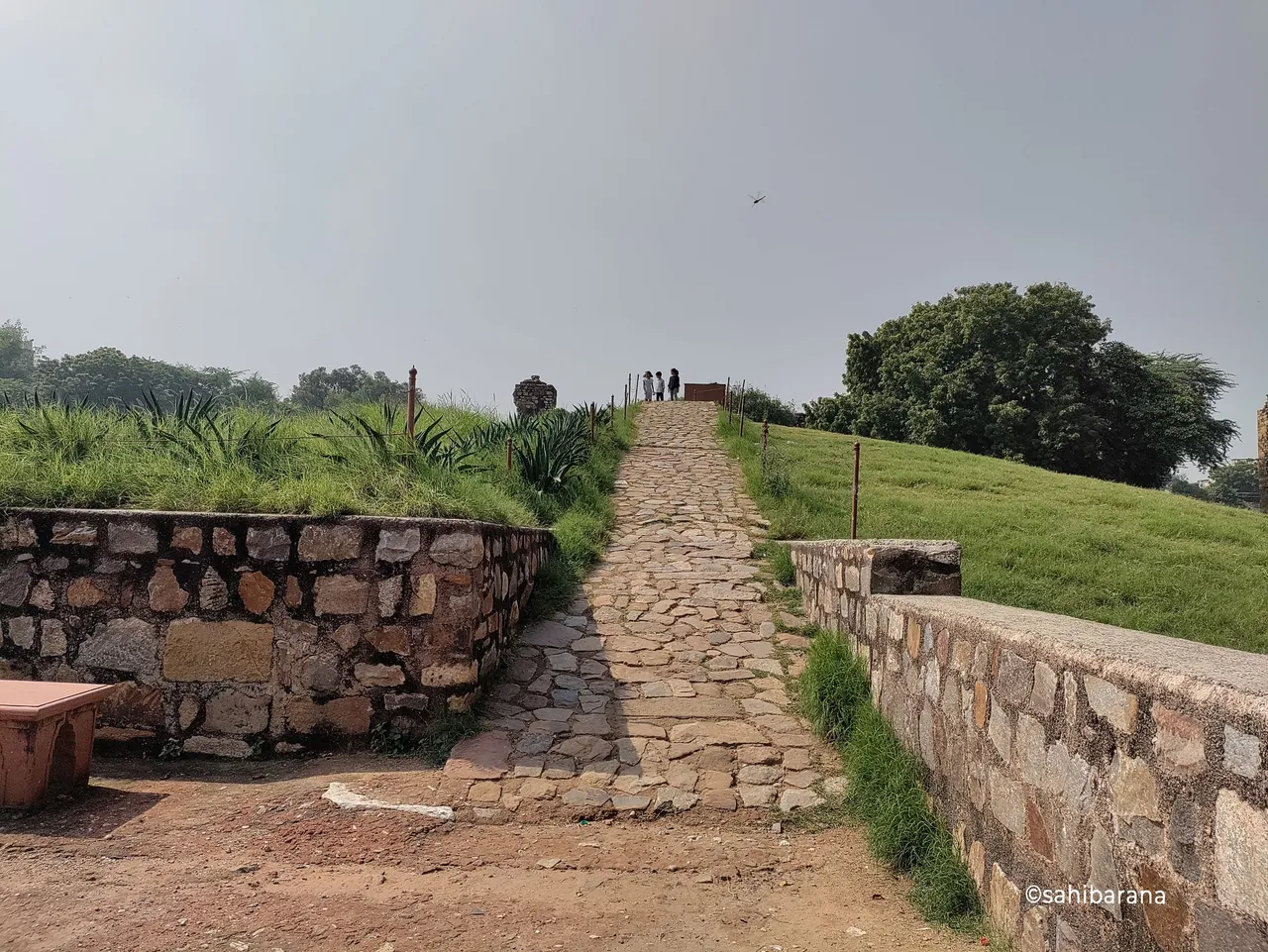
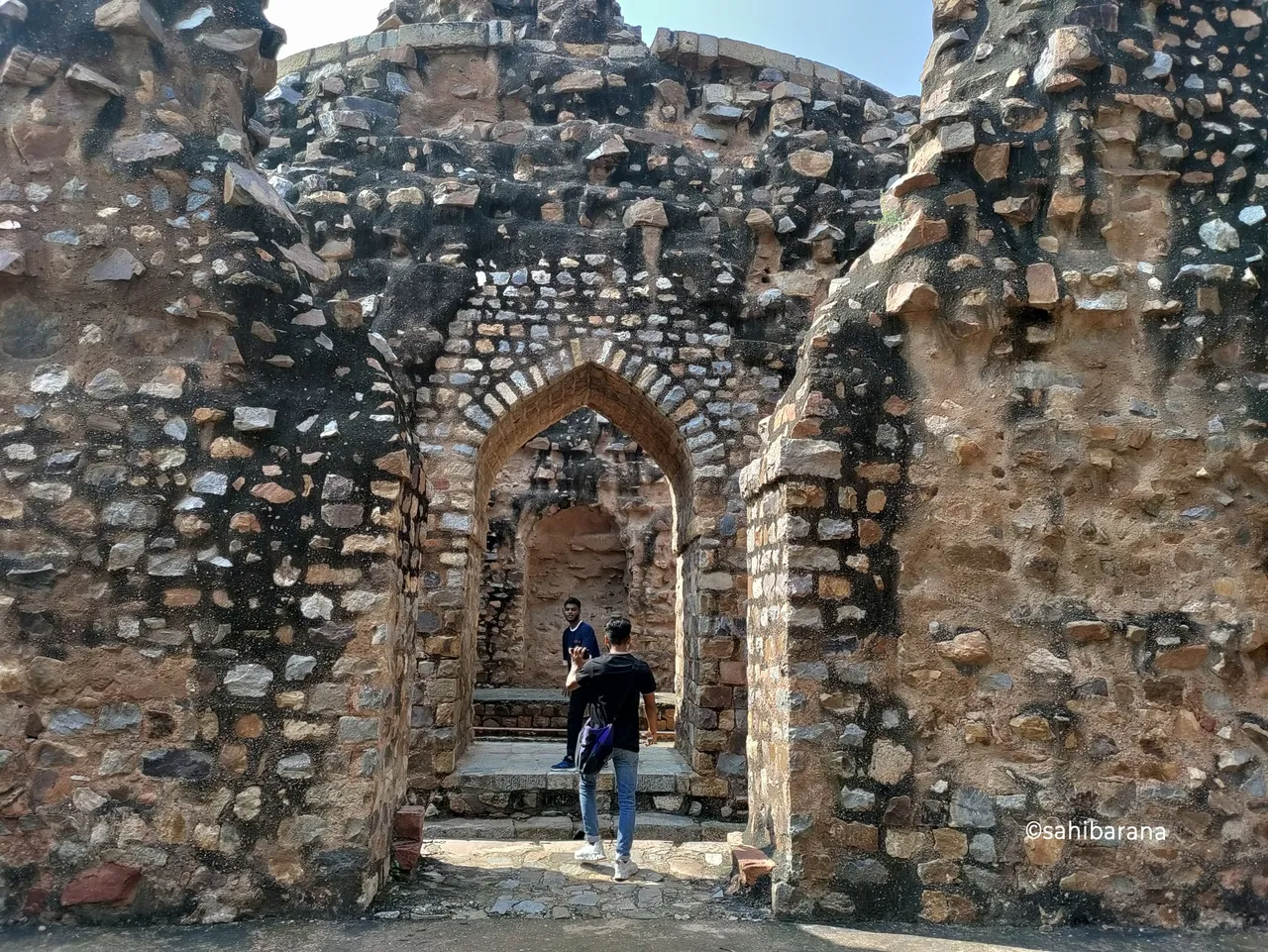
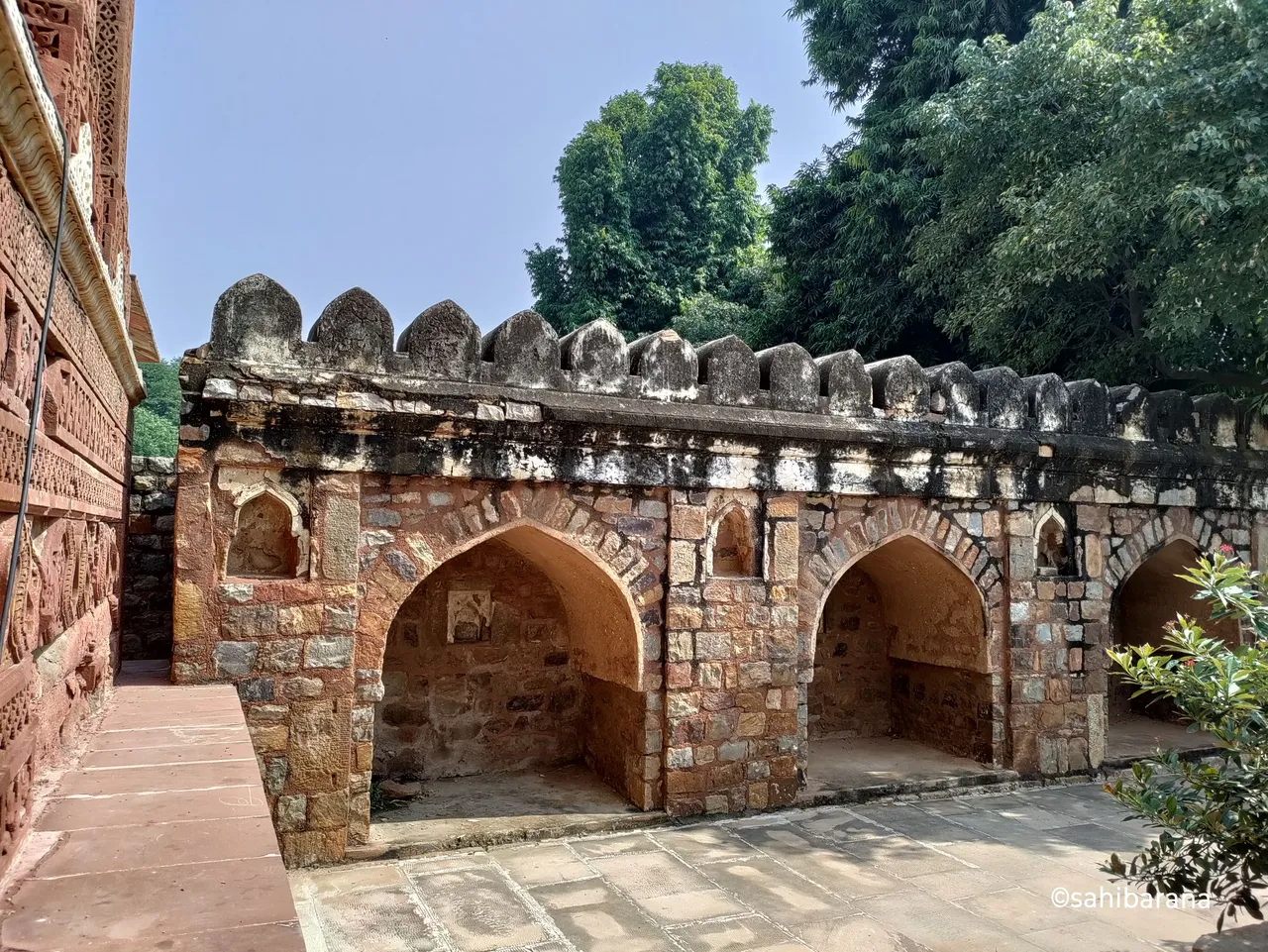
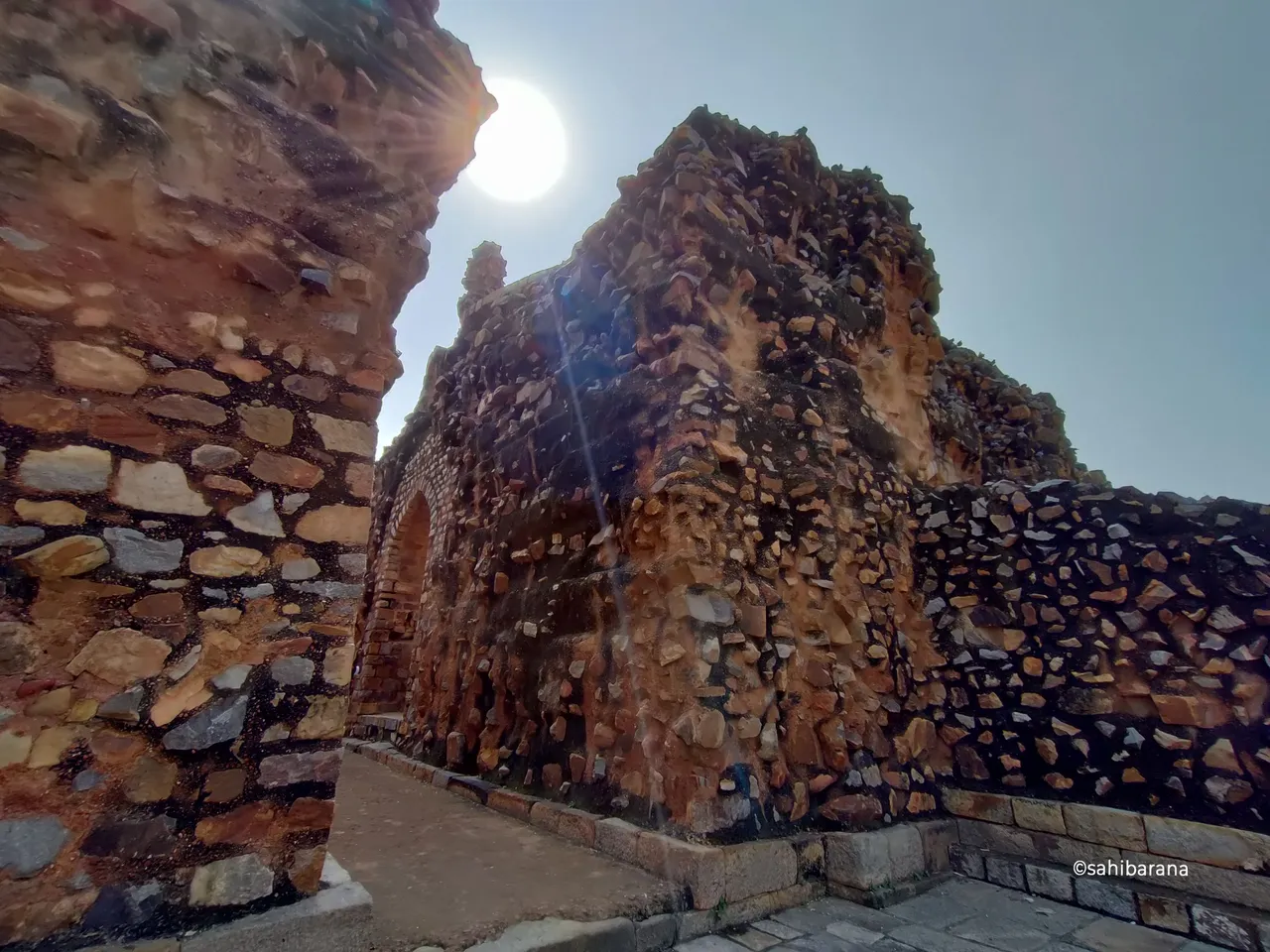
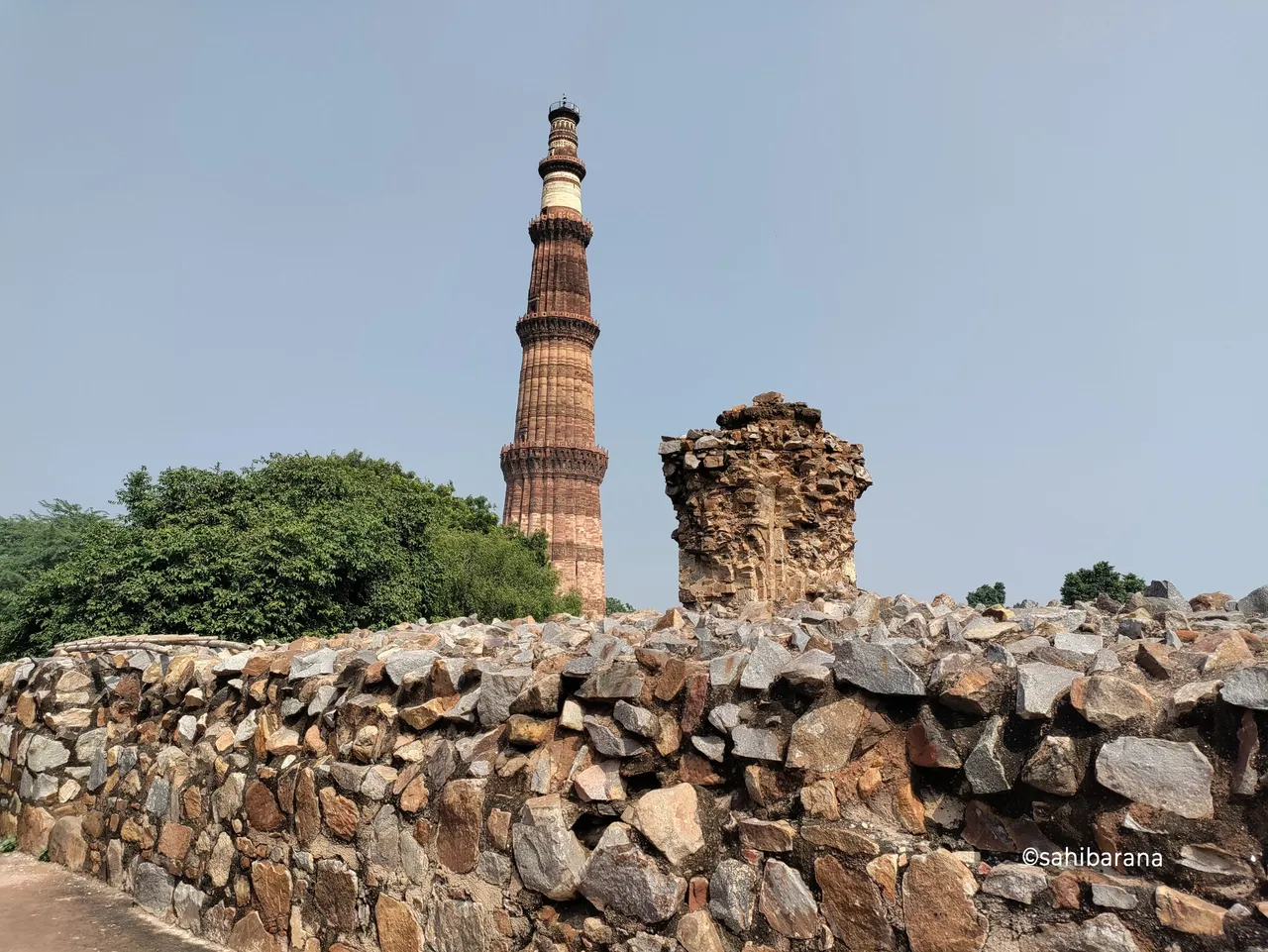
Alai Darwaza which is found here in the ruins is considered the first example of the true arch and dome style which represents Ghurids architecture style.
Mostly rubble work is witnessed in these ruins which leads to the west side temple complex
These ruins are used in shooting of many movies and shows, even the still photography is really common here, people come with models and camera and do proper shoot. The government charges people to shoot which is quite lesser than what would a film set would have cost.
The Iron pillar
Last but not the least comes is the Iron pillar, the most speculated pillar of all times. It has caught little to no rust in its lifetime of 1600 years.
Literally this long.
The most fascinating thing is the mixture, it is made up of. Until now I thought it is still unfolded as to what is the composition of the pillar which has caused literally no rust over past more than thousand years and as compared to new age structures of Iron, they get rusted and corroded within 80-90 years easily.
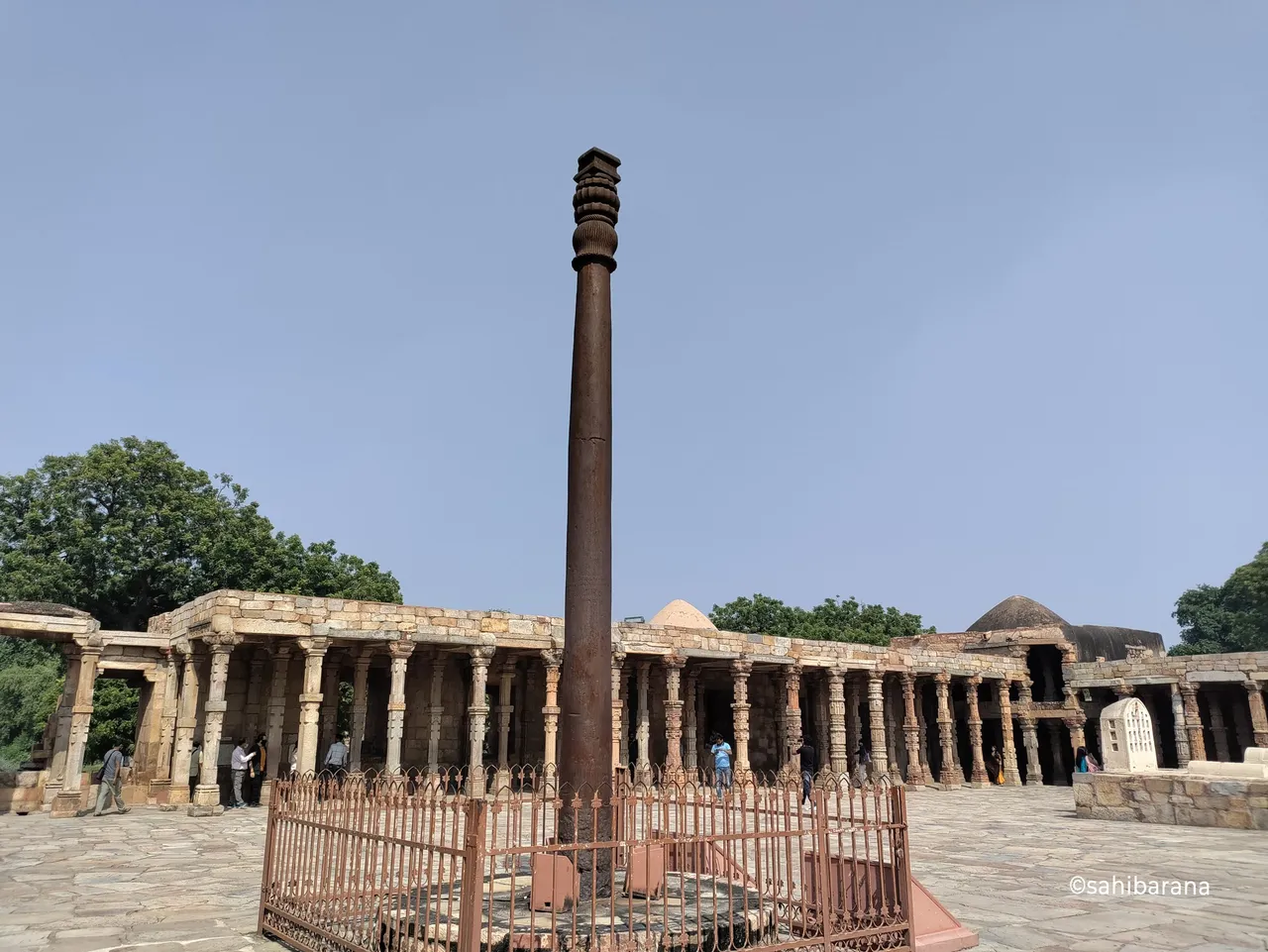
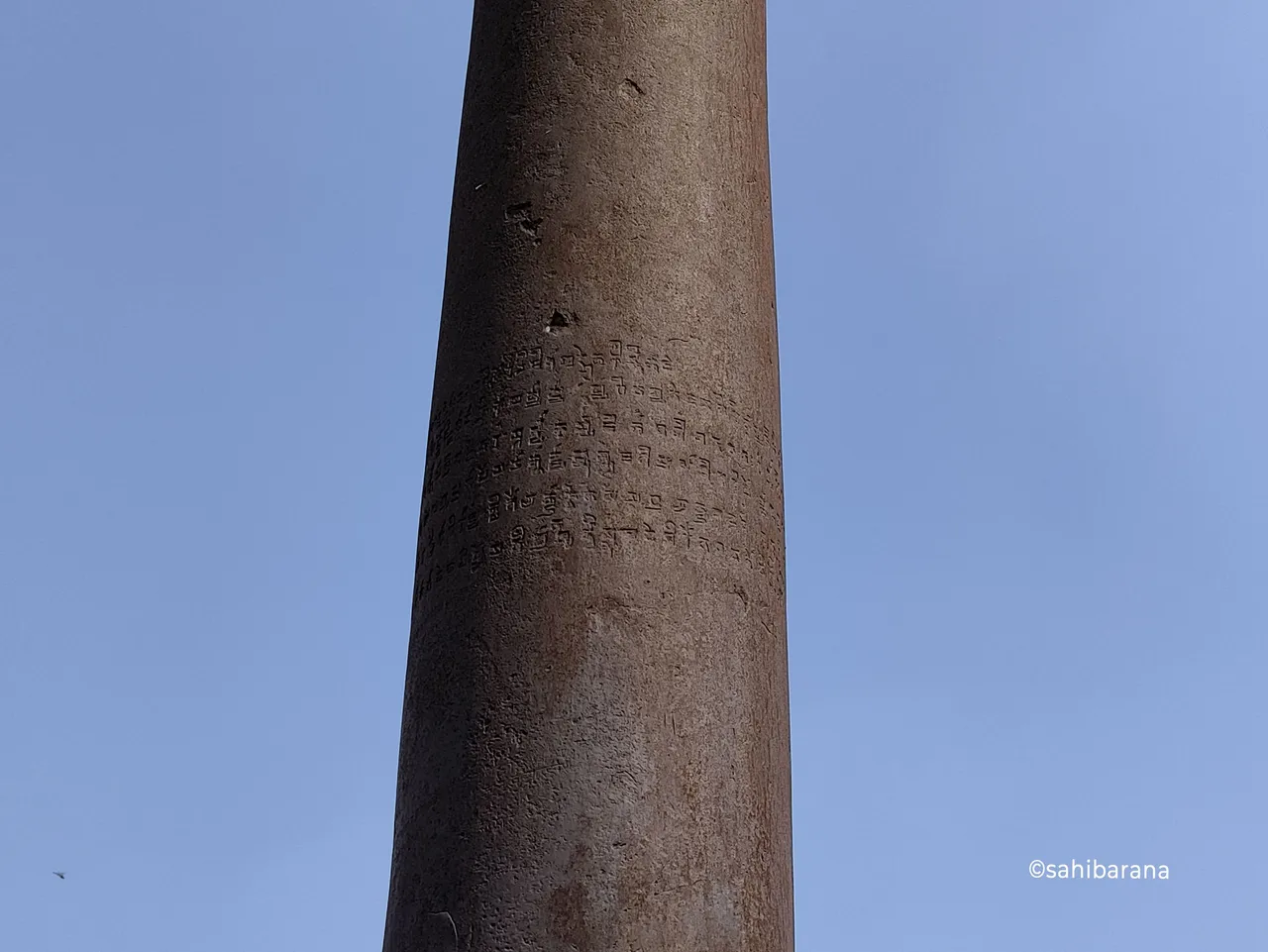
Until 2002, the scientists discovered what's inside the composition of the historic iron pillar,
98%- IRON
1%- PHOSPHORUS
1%- VAJRA SANGHATA
Vajra sanghata is ancient Indian paste which was used in old historic monuments as well. The composition of vajra sanghata is -
8 parts Lead
2 parts Bell metal
2 parts Calx-Brass
I got hands on this information through a wonderful youtuber called Praveen Mohan who is superb in decoding the ancients indian temples and he is the reason why my interest in historic buildings surfaced.
This is the reason why it never caught rust.

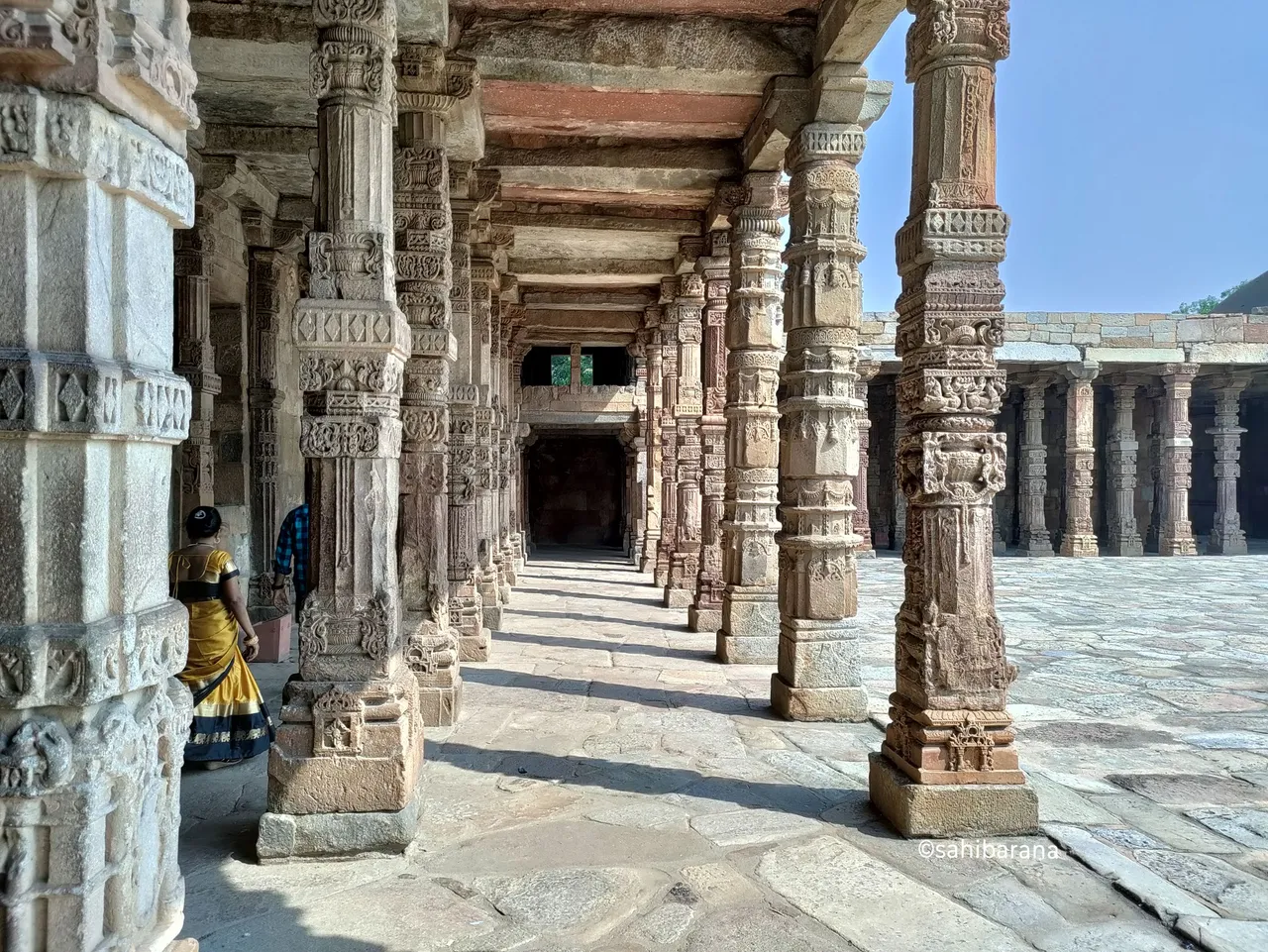
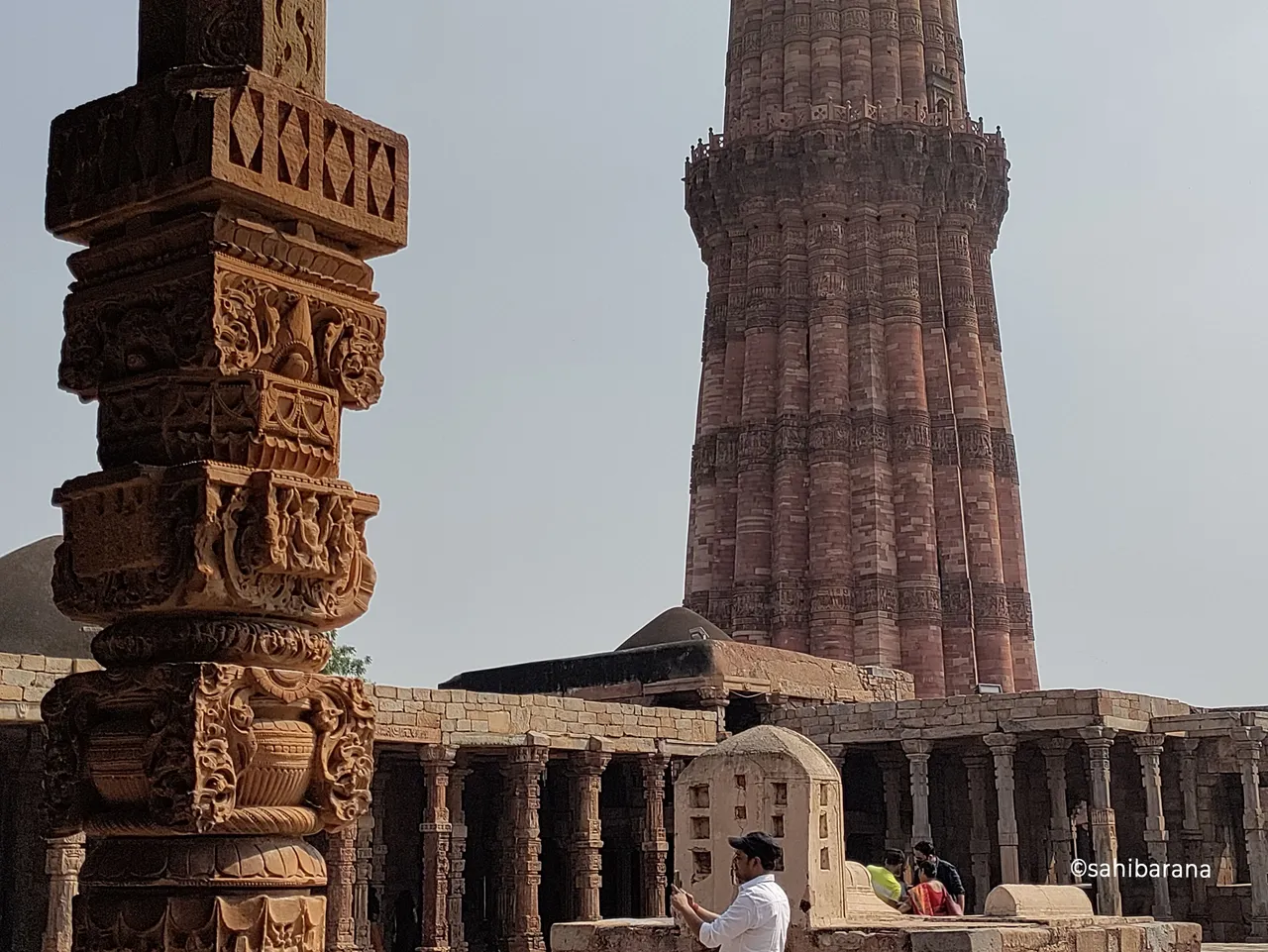
Concluding
It is fascinating to witness the old soul of architecture i.e. the historic structures, They say a thousand stories, how many told and untold stories must have been between these beautiful ruins.
It's astonishing to witness how precise and knowledgeable our past historic human civilisation was.
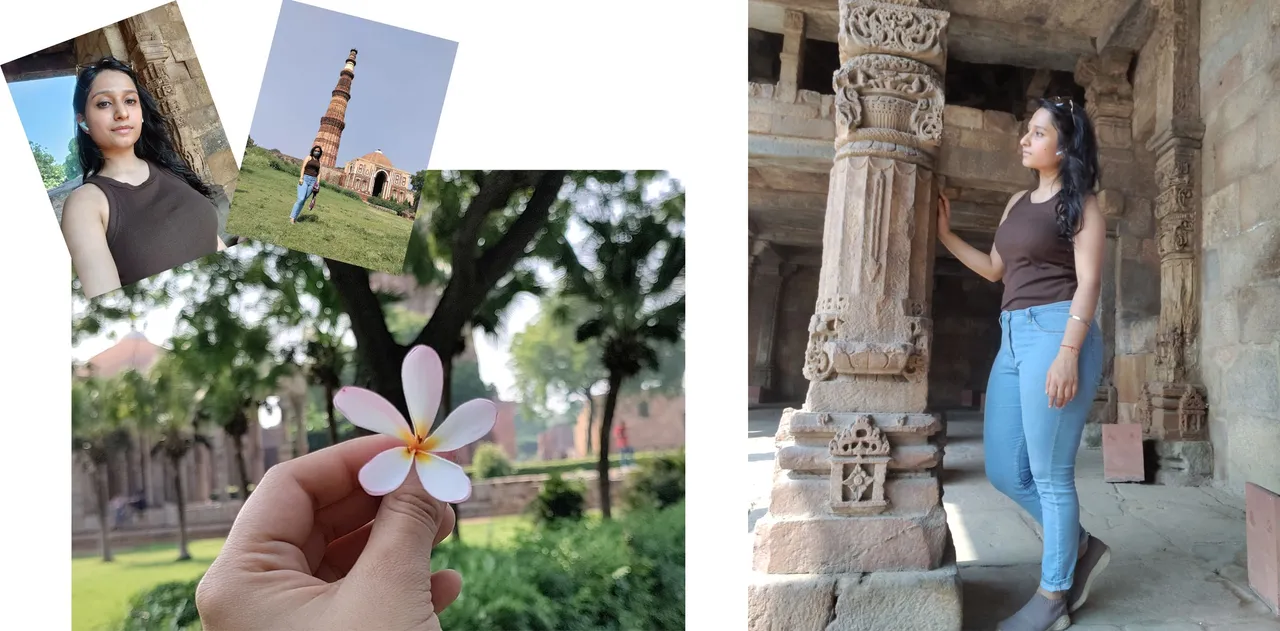
Have you ever felt happy and fulfilled after visiting a historic architectural place of great importance?

